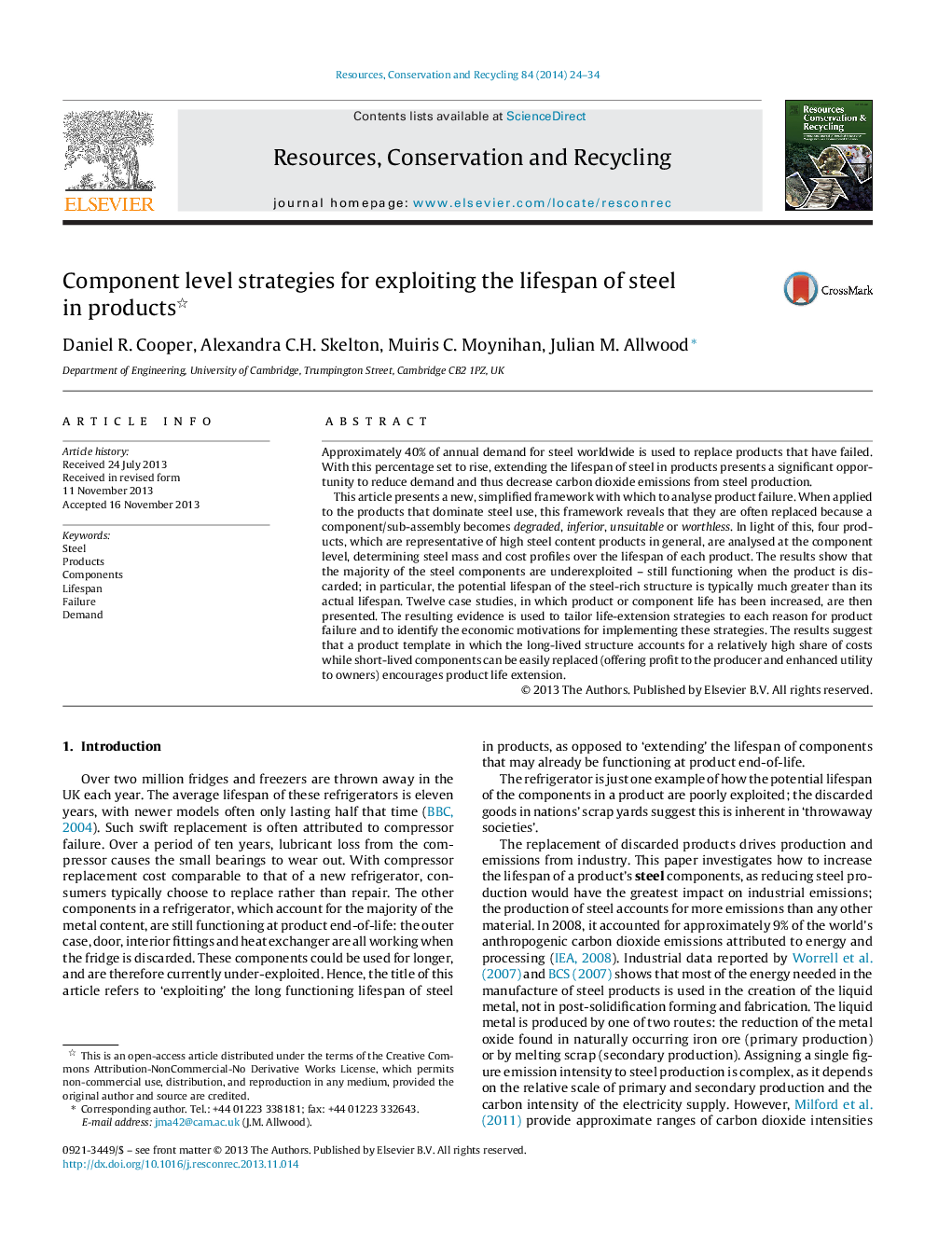| Article ID | Journal | Published Year | Pages | File Type |
|---|---|---|---|---|
| 7495442 | Resources, Conservation and Recycling | 2014 | 11 Pages |
Abstract
This article presents a new, simplified framework with which to analyse product failure. When applied to the products that dominate steel use, this framework reveals that they are often replaced because a component/sub-assembly becomes degraded, inferior, unsuitable or worthless. In light of this, four products, which are representative of high steel content products in general, are analysed at the component level, determining steel mass and cost profiles over the lifespan of each product. The results show that the majority of the steel components are underexploited - still functioning when the product is discarded; in particular, the potential lifespan of the steel-rich structure is typically much greater than its actual lifespan. Twelve case studies, in which product or component life has been increased, are then presented. The resulting evidence is used to tailor life-extension strategies to each reason for product failure and to identify the economic motivations for implementing these strategies. The results suggest that a product template in which the long-lived structure accounts for a relatively high share of costs while short-lived components can be easily replaced (offering profit to the producer and enhanced utility to owners) encourages product life extension.
Related Topics
Physical Sciences and Engineering
Energy
Renewable Energy, Sustainability and the Environment
Authors
Daniel R. Cooper, Alexandra C.H. Skelton, Muiris C. Moynihan, Julian M. Allwood,
